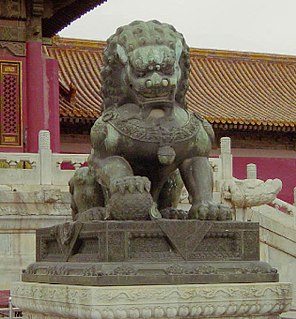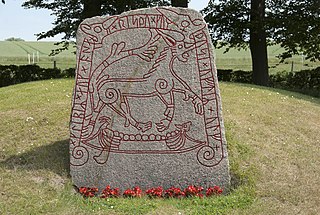 W
WAnput is a goddess in ancient Egyptian religion. Her name is written in hieroglyphs as jnpwt. In English, her name also is rendered as Anupet, Input, Inpewt, and Yineput. As the female counterpart of her husband, Anubis, who was known as jnpw to the Egyptians, Anput's name ends in a feminine "t" suffix when seen as jnpwt.
 W
WAnubis or Inpu, Anpu in Ancient Egyptian is the Greek name of the god of death, mummification, embalming, the afterlife, cemeteries, tombs, and the Underworld, in ancient Egyptian religion, usually depicted as a canine or a man with a canine head. Archeologists have identified Anubis's sacred animal as an Egyptian canid, the African golden wolf. The African wolf was formerly called the "African golden jackal", until a 2015 genetic analysis updated the taxonomy and the common name for the species. As a result, Anubis is often referred to as having a "jackal" head, but this "jackal" is now more properly called a "wolf".
 W
WA black dog is a motif of a spectral or demonic entity found primarily in the folklore of the British Isles. The black dog is essentially a nocturnal apparition, in some cases a shapeshifter, and is often said to be associated with the Devil or described as a ghost or supernatural hellhound. Its appearance was regarded as a portent of death. It is generally supposed to be larger than a normal dog and often has large glowing eyes. It is sometimes associated with electrical storms and also with crossroads, places of execution and ancient pathways.
 W
WIn English folklore, Black Shuck, Old Shuck, Old Shock or simply Shuck is the name given to an East Anglian ghostly black dog which is said to roam the coastline and countryside of East Anglia, one of many ghostly black dogs recorded in folklore across the British Isles. Accounts of Black Shuck form part of the folklore of Norfolk, Suffolk, the Cambridgeshire fens and Essex, and descriptions of the creature's appearance and nature vary considerably; it is sometimes recorded as an omen of death, but, in other instances, is described as companionable.
 W
WIn Greek mythology, Cerberus, often referred to as the hound of Hades, is a multi-headed dog that guards the gates of the Underworld to prevent the dead from leaving. He was the offspring of the monsters Echidna and Typhon, and was usually described as having three heads, a serpent for a tail, and snakes protruding from multiple parts of his body. Cerberus is primarily known for his capture by Heracles, one of Heracles' twelve labours.
 W
WChinese or Imperial guardian lions are a traditional Chinese architectural ornament. Typically made of stone, they are also known as stone lions or shishi (石獅、shíshī). They are known in colloquial English as lion dogs or foo dogs/fu dogs. The concept, which originated and became popular in Chinese Buddhism, features a pair of highly stylized lions—often one male with a ball and one female with a cub—which were thought to protect the building from harmful spiritual influences and harmful people that might be a threat. Used in imperial Chinese palaces and tombs, the lions subsequently spread to other parts of Asia including Japan, Korea, Tibet, Thailand, Burma, Vietnam, Sri Lanka, Nepal, Cambodia, Laos, Taiwan, and Singapore.
 W
WThe church grim is a guardian spirit in English and Scandinavian folklore that oversees the welfare of a particular Christian church and protects the churchyard from those who would profane and commit sacrilege against it. It often appears as a black dog but is known to take the form of other animals.
 W
WCoyote is a mythological character common to many cultures of the indigenous peoples of North America, based on the coyote animal. This character is usually male and is generally anthropomorphic, although he may have some coyote-like physical features such as fur, pointed ears, yellow eyes, a tail and claws. The myths and legends which include Coyote vary widely from culture to culture.
 W
WFenrir or Fenrisúlfr, also referred to as Hróðvitnir ("fame-wolf") and Vánagandr, or Vanargand, is a monstrous wolf in Norse mythology. Fenrir, together with Hel and the World Serpent, is a child of Loki and giantess Angrboða. He is attested in the Poetic Edda, compiled in the 13th century from earlier traditional sources, and the Prose Edda and Heimskringla, written in the 13th century by Snorri Sturluson. In both the Poetic Edda and Prose Edda, Fenrir is the father of the wolves Sköll and Hati Hróðvitnisson, is a son of Loki and is foretold to kill the god Odin during the events of Ragnarök, but will in turn be killed by Odin's son Víðarr.
The fox spirit or nine-tailed fox is a mythical fox entity originating from Chinese mythology that is a common motif in East Asian mythology.
 W
WThe Gytrash, a legendary black dog known in Northern England, was said to haunt lonely roads awaiting travelers. Appearing in the shape of horses, mules, cranes or dogs, the Gytrash haunt solitary ways and lead people astray but they can also be benevolent, guiding lost travelers to the right road. They are usually feared.
 W
WThe hound or dog is used as a charge in classical heraldry. In English heraldry, the commonly used variant are the talbot, also blazoned as sleuth-hound, e.g. in the arms of Wolseley of Staffordshire, the greyhound and bloodhound. Rarely seen variants are the ratch-hound, the mastiff, the foxhound, the spaniel and the terrier. The "sea-dog" is a curious charge resembling the talbot but with scales, webbed feet and a broad tail, used in the arms of Stourton barony, presumably originally depicting a beaver . Similar charges include the wolf and the fox.
 W
WIn Aztec mythology, Huehuecóyotl [weːweˈkojoːt͡ɬ] is the auspicious Pre-Columbian god of music, dance, mischief, and song. He is the patron of uninhibited sexuality and rules over the day sign in the Aztec calendar named cuetzpallin (lizard) and the fourth trecena Xochitl.
Huli jing or jiuweihu are Chinese mythological creatures usually capable of shapeshifting, who may either be benevolent or malevolent spirits.
 W
WInugami , like kitsunetsuki, is a spiritual possession by the spirit of a dog, widely known about in western Japan. They have seemed firmly rooted until recent years in the eastern Ōita Prefecture, Shimane Prefecture, and a part of Kōchi Prefecture in northern Shikoku, and it is also theorized that Shikoku, where no foxes (kitsune) could be found, is the main base of the inugami. Furthermore, traces of belief in inugami exists in the Yamaguchi Prefecture, all of Kyushu, even going past the Satsunan Islands all the way to the Okinawa Prefecture. In the Miyazaki Prefecture, the Kuma District, Kumamoto Prefecture, and Yakushima, the local dialect pronounces it "ingami" and in Tanegashima, they are called "irigami." It can also be written in kanji as 狗神.
 W
WKomainu (狛犬), often called lion-dogs in English, are statue pairs of lion-like creatures either guarding the entrance or the honden, or inner shrine of many Japanese Shinto shrines or kept inside the inner shrine itself, where they are not visible to the public. The first type, born during the Edo period, is called sandō komainu , the second and much older type jinnai komainu . They can sometimes be found also at Buddhist temples, nobility residences or even private homes.
 W
WRaijū is a legendary creature from Japanese mythology.
 W
WIn Norse mythology, Sköll is a wolf that chases the Sun. Hati Hróðvitnisson chases the Moon.
 W
WIn Norse mythology, a vargr is a wolf, especially the wolf Fenrir and the wolves that chase the sun and moon Sköll and Hati. Based on this, J. R. R. Tolkien in his fiction used the form warg, which may incorporate Old English wearh, as the name of a particularly large and evil kind of wolf that could be ridden by orcs. Through Tolkien's influence, the concept has been used in fantasy works by other authors and in other media.
 W
WIn late Egyptian mythology, Wepwawet was originally a war deity, whose cult centre was Asyut in Upper Egypt. His name means opener of the ways and he is often depicted as a wolf standing at the prow of a solar-boat. Some interpret that Wepwawet was seen as a scout, going out to clear routes for the army to proceed forward. One inscription from the Sinai states that Wepwawet "opens the way" to king Sekhemkhet's victory.
 W
WWere-hyena is a neologism coined in analogy to werewolf for therianthropy involving hyenas. It is common in the folklore of the Arabian Peninsula, the Levant, North Africa, the Horn of Africa, and the Near East as well as some adjacent territories. Unlike werewolves and other therianthropes, which are usually portrayed as being originally human, some werehyena lore tells of how they can also be hyenas disguised as humans.
 W
WIn folklore, a werewolf, or occasionally lycanthrope, is a human with the ability to shapeshift into a wolf, either purposely or after being placed under a curse or affliction with the transformations occurring on the night of a full moon. Early sources for belief in this ability or affliction, called lycanthropy, are Petronius (27–66) and Gervase of Tilbury (1150–1228).
 W
WThe White Greyhound of Richmond is one of the Queen's Beasts commissioned for display at the coronation of Queen Elizabeth II in 1953. A stone copy can also be found in the Royal Botanic Gardens, Kew.
 W
WThe Wild Hunt is a folklore motif that historically occurs in the folklore of various Northern European cultures. Wild Hunts typically involve a "soul-raving" chase led by a mythological figure escorted by a ghostly or supernatural group of hunters passing in wild pursuit. The leader of the hunt is often a named figure associated with Odin in Germanic legends, but may variously be a historical or legendary figure like Theodoric the Great, the Danish king Valdemar Atterdag, the Welsh psychopomp Gwyn ap Nudd, biblical figures such as Herod, Cain, Gabriel, or the Devil, or an unidentified lost soul or spirit either male or female. The hunters are generally the souls of the dead or ghostly dogs, sometimes fairies, Valkyries, or elves.
 W
WThe wolf is a common motif in the foundational mythologies and cosmologies of peoples throughout Eurasia and North America. The obvious attribute of the wolf is its nature of a predator, and correspondingly it is strongly associated with danger and destruction, making it the symbol of the warrior on one hand, and that of the devil on the other. The modern trope of the Big Bad Wolf is a development of this. The wolf holds great importance in the cultures and religions of the nomadic peoples, both of the Eurasian steppe and North American Plains.
 W
WThe wolf has been widely used in many forms in heraldry during the Middle Ages. Though commonly reviled as a livestock predator and man-eater, the wolf was also considered a noble and courageous animal, and frequently appeared on the arms and crests of numerous noble families. It typically symbolised the rewards of perseverance in long sieges or hard industry.